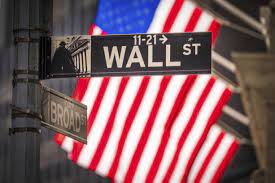
Wall Street is drifting lower Tuesday following a strong rally that had vaulted it to its highest level since the start of August.
The S&P 500 was 0.3% lower in early trading and on track for just its third loss in the last 17 days. The Dow Jones Industrial Average was down 100 points, or 0.3%, as of 9:40 a.m. Eastern time, and the Nasdaq composite was 0.4% lower.
Retailers were mixed after several reported their earnings for the latest quarter and, more importantly, their forecasts for the upcoming holiday shopping season.
Lowe’s sank 2.9% despite reporting better profit for the latest quarter than analysts expected. Its revenue fell short of Wall Street’s estimates, and it also cut its forecasts for revenue and profit over the full year. Sales for do-it-yourself projects have been lower than expected at the home improvement retailer
Best Buy dropped 4.5% after likewise beating analysts’ expectations for profit in the latest quarter but falling short on revenue. Its CEO, Corie Barry, said demand from customers has been “more uneven and difficult to predict.”
Stocks of oil-and-gas companies were also weak after the price of crude sank. A barrel of benchmark U.S. crude fell 1% to $77.08, while Brent crude, the international standard, dipped 0.7% to $81.78 per barrel.
That dragged Marathon Petroleum down 1.5% and Exxon Mobil down 0.8%. Oil prices have been swinging in recent weeks after topping $93 roughly two months ago, when it was raising worries about inflation.
On the winning side of Wall Street was Dick’s Sporting Goods, which jumped 10%. It delivered stronger profit and revenue for the third quarter than analysts expected, as customers both bought more at each transaction and made more total purchases. The sporting goods retailer raised its forecasts for full-year results.
Retailers are closing out what’s been a mostly better-than-hoped earnings reporting season for the summer. Companies in the S&P 500 are on track to deliver their first year-over-year growth in earnings per share in a year, according to FactSet.
But it’s been interest rates that have been the much bigger factor moving the stock market recently. Stocks have jumped on rising hopes that inflation has cooled enough to make the Federal Reserve’s next move on interest rates a cut rather than a hike.
It would be a stark turnaround after the Fed rushed to yank its main interest rate to its highest level since 2001 from virtually zero early last year. The central bank is trying to slow the economy and hurt investment prices just enough with high interest rates to smother inflation without overdoing it and causing a painful recession.
Recent economic reports suggesting a slowdown in both inflation and the economic activity that could drive more inflation have pushed traders to move up their expectations for when the Fed could begin to cut rates. They see a 27.5% chance of it happening in March and a nearly 62% probability that it happens by May, according to data from CME Group.
Such hopes have caused Treasury yields in the bond market to tumble. The yield on the 10-year Treasury dipped to 4.40% Tuesday from 4.42% late Monday.
Just a few weeks ago, the 10-year yield was above 5%, at its highest level since 2007 and undercutting prices for stocks and other investments.
Of course, too strong a drop in Treasury yields and too big a rally in stock prices could give officials at the Federal Reserve pause. Such movements could give the economy more juice, which would just put more upward pressure on inflation, and push the Fed toward hiking again.
But even the Fed officials who are generally most inclined to favor keeping rates high have recently softened their tone some, according to economists at Deutsche Bank.
“Overall, these Fed communications reinforced our view that the likelihood of a December hike is very low and we have reached the end of hiking cycle,” said the economists led by Amy Yang.
Later Tuesday afternoon, the Federal Reserve will release the minutes from its last meeting, where it kept interest rates steady.
In stock markets abroad, indexes were mixed and moving mostly modestly across Europe and Asia.
_
AP Business Writer Yuri Kageyama contributed to this report.






